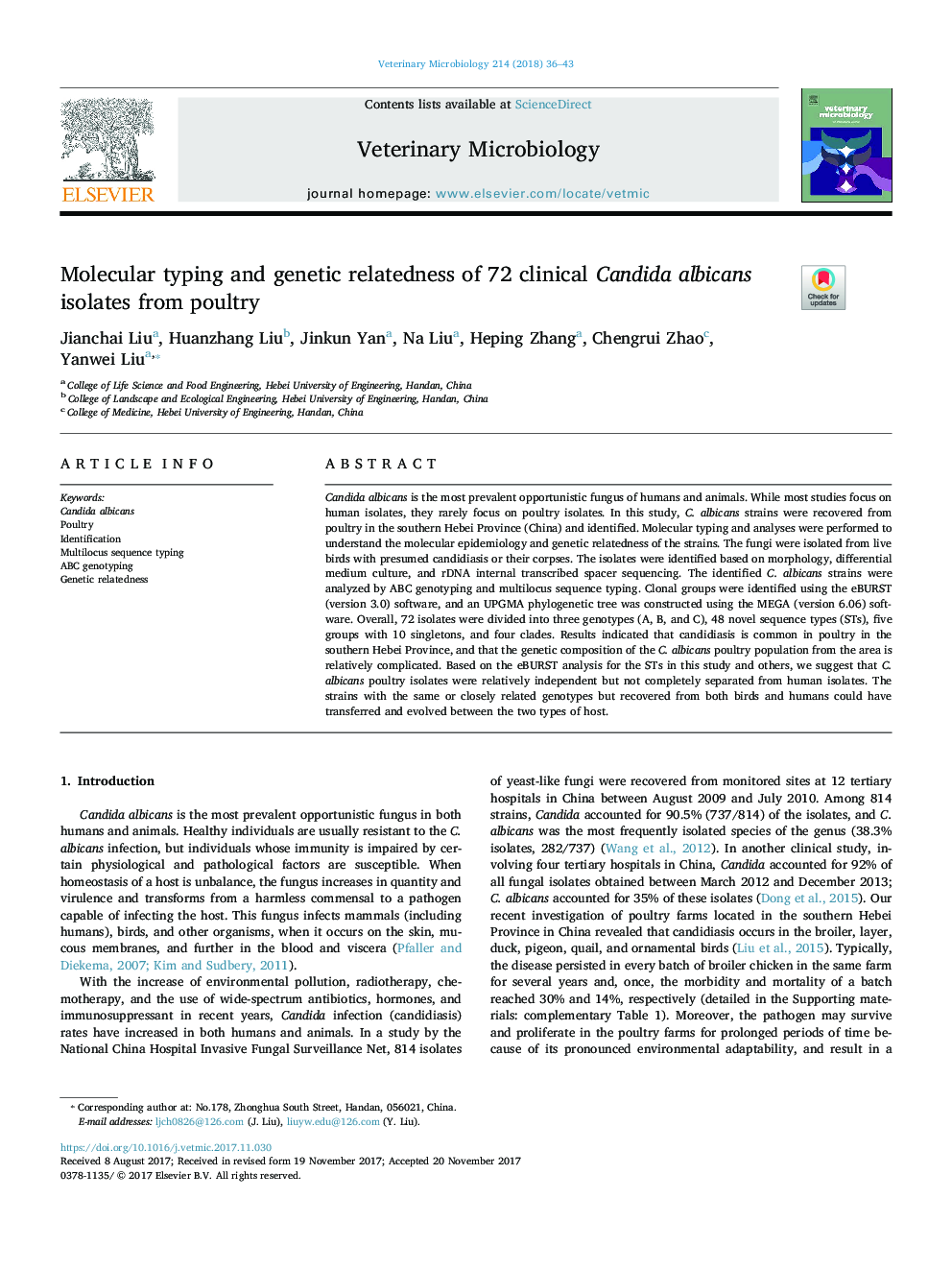| کد مقاله | کد نشریه | سال انتشار | مقاله انگلیسی | نسخه تمام متن |
|---|---|---|---|---|
| 8505608 | 1555309 | 2018 | 8 صفحه PDF | دانلود رایگان |
عنوان انگلیسی مقاله ISI
Molecular typing and genetic relatedness of 72 clinical Candida albicans isolates from poultry
ترجمه فارسی عنوان
تایپ مولکولی و ارتباط ژنتیکی 72 جدایه کاندیدا آلبیکنس از مرغ
دانلود مقاله + سفارش ترجمه
دانلود مقاله ISI انگلیسی
رایگان برای ایرانیان
کلمات کلیدی
موضوعات مرتبط
علوم زیستی و بیوفناوری
علوم کشاورزی و بیولوژیک
علوم دامی و جانورشناسی
چکیده انگلیسی
Candida albicans is the most prevalent opportunistic fungus of humans and animals. While most studies focus on human isolates, they rarely focus on poultry isolates. In this study, C. albicans strains were recovered from poultry in the southern Hebei Province (China) and identified. Molecular typing and analyses were performed to understand the molecular epidemiology and genetic relatedness of the strains. The fungi were isolated from live birds with presumed candidiasis or their corpses. The isolates were identified based on morphology, differential medium culture, and rDNA internal transcribed spacer sequencing. The identified C. albicans strains were analyzed by ABC genotyping and multilocus sequence typing. Clonal groups were identified using the eBURST (version 3.0) software, and an UPGMA phylogenetic tree was constructed using the MEGA (version 6.06) software. Overall, 72 isolates were divided into three genotypes (A, B, and C), 48 novel sequence types (STs), five groups with 10 singletons, and four clades. Results indicated that candidiasis is common in poultry in the southern Hebei Province, and that the genetic composition of the C. albicans poultry population from the area is relatively complicated. Based on the eBURST analysis for the STs in this study and others, we suggest that C. albicans poultry isolates were relatively independent but not completely separated from human isolates. The strains with the same or closely related genotypes but recovered from both birds and humans could have transferred and evolved between the two types of host.
ناشر
Database: Elsevier - ScienceDirect (ساینس دایرکت)
Journal: Veterinary Microbiology - Volume 214, February 2018, Pages 36-43
Journal: Veterinary Microbiology - Volume 214, February 2018, Pages 36-43
نویسندگان
Jianchai Liu, Huanzhang Liu, Jinkun Yan, Na Liu, Heping Zhang, Chengrui Zhao, Yanwei Liu,
